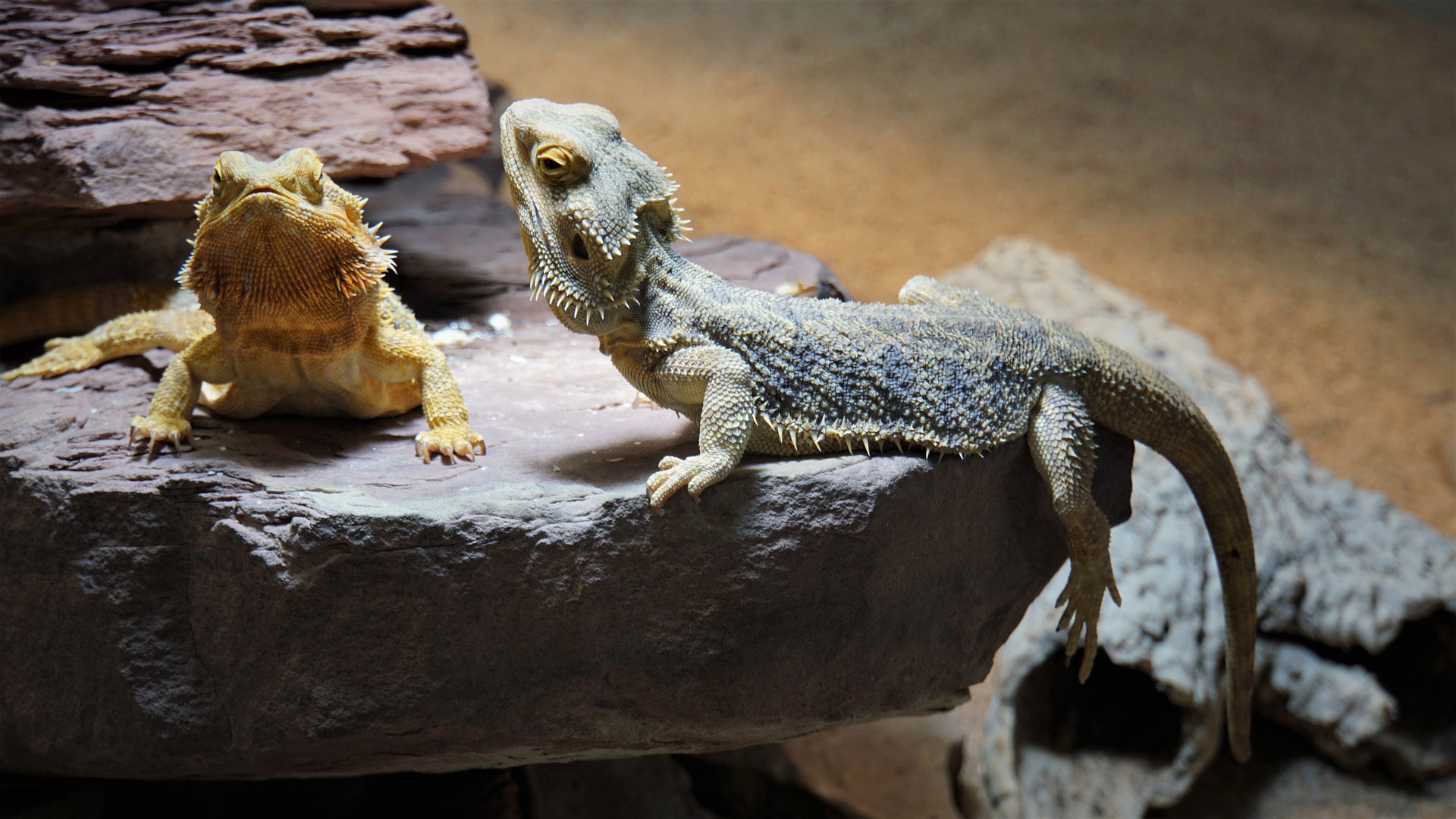Well, when considering an abundance of bearded dragon morphs that exist, a pretty apparent would come why so many reptile and lizard enthusiasts are captivated by this specific breed of lizard.
Further, with an even temperament and manageable size, this fondness should be even more clear.
So many gorgeous morphs to choose from and easy-to-care lizards(bearded dragons), it’s no wonder bearded dragons have exploded in popularity over the last several decades!
Naturally, if you’re considering a cute bearded dragon, you’ll want to do your homework on morphs. And if you’re on the hunt for explanations and photos, then rest assured you’ve come to the right place!
Contents
A Book about Bearded Dragons
The bearded dragon manual is a perfect book for all persons keeping dragons and anyone who wants to own them. It explains all the necessary tools you will need to give the ideal care to your dragon throughout its life.
Don’t miss the insightful information from the book, all the way from selection, diet, habitat, health, color morphs, beardie’s behavioral traits, etc.
What Is A Bearded dragon morph?
In case you are new to bearded dragons (or lizards in general), let’s briefly discuss what exactly is a bearded dragon morph.
There are several types of discovered morphs for bearded dragons. Morph, in simple terms, describes the overall appearance of a beardie, scales, and body type. Some people use color and morph interchangeably, but morph is not color. The two are extremely different.
A beardie morph can affect its color, but it largely involves the dragon’s body type and, in some instances, the pattern. For instance, you may notice there are beardies with fewer or more spikes while they are completely absent in some dragons.
Morphs are of two primary kinds, that is, selective and pigment mutation. In pigment mutation, color is attained by the loss of or improvement of the ability of the specimen to produce pigment. A good example is the Hypomelanistic bearded dragon.
On the other hand, in selective mutation, the actual natural colors are enhanced by selective breeding. An example of the selective mutation is the translucent bearded dragons.
Some colors of the bearded dragons are attained through a combination of two primary types of the morph. It can be confusing to identify the beardies under this category if you are not a savvy identifier of bearded dragon morphs.
How Many Bearded Dragon Morphs Are There Exactly?
In general, bearded dragons have 11 morphs. Each morph has its special attributes that can be seen in a bearded dragon of any color. Just to reiterate, morph explains how a bearded dragon looks like, including its size and body type.
Different bearded dragon morphs may vary in color; they can also have different nail colors, spikes, head shapes, patterns, scales, and more.
Some morphs are uncommon and are probably expensive from breeders. It is crucial to have a good knowledge of the different morphs to guide you during the purchase.
Here is the list of the different types of bearded dragon morphs and their unique characteristics. The list will provide you an overview about the morphs when it comes to bearded dragons as pets.
Classic(Standard) Morph
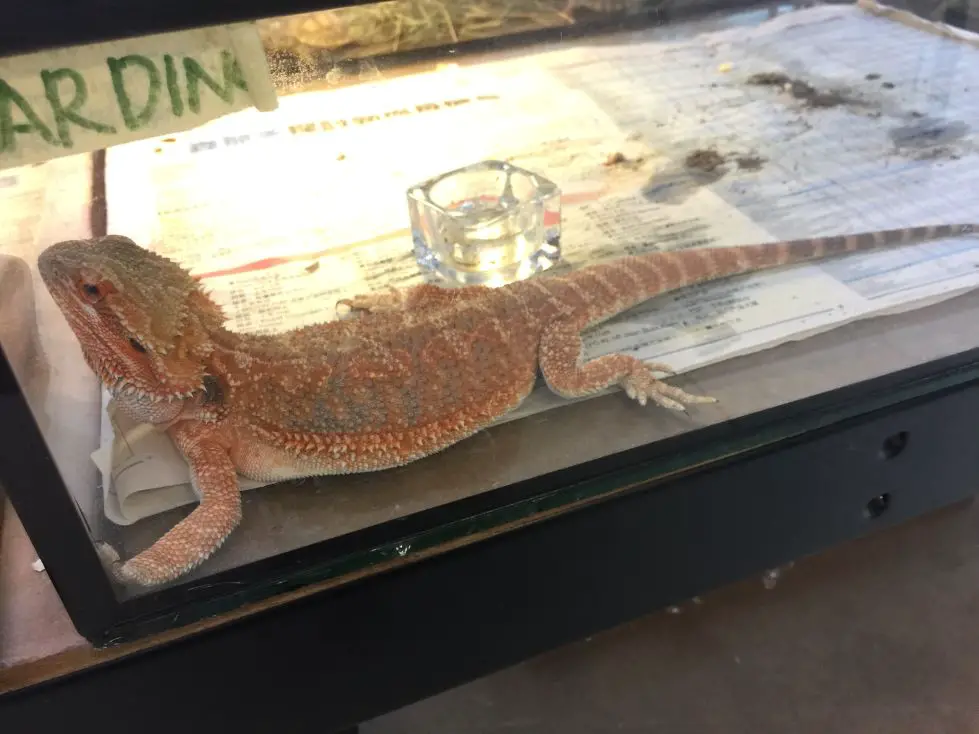
It is mostly referred to as the basic bearded dragon. The classic or standard dragons closely resemble its wild counterpart. They have small spikes overspreading in the back and have a signature triangular head with a beard.
Classic bearded dragon morphs are mostly brown or tan, but they can come with different colors ranging from red, yellow, and have orange and black markings.
Classic bearded dragons are popular and tend to be cheaper than other morphs.
Translucent Morph
They are called translucent (or trans) because they possess an almost see-through appearance of their scales and spikes. The translucent bearded dragons are lighter in color, and babies tend to have bluish bellies, sometimes they have shades of blue in other areas, especially above the eyes.
As the babies continue to grow, some of them tend to lose the blue coloration while some maintain it.
They are easily distinguished from other morphs because of their solid dark eyes with invisible iris, and sometimes blue eyelids. However, not all translucent morph beardies possess solid black eyes.
These morphs are famous in changing their eye coloration during their lifetime. For instance, babies can change from solid black to typical eyes as they grow up.
There are different existing translucent morphs, see the list below.
- Dark Translucent.
- Belgium Translucent.
- Rally Red Trans.
- Red and Orange Hypo Translucent.
- Hypo Het Translucent.
- Citrus Tiger Hypo Translucent.
- Hypo Translucent Genetic Stripe and Leatherback Genetic Stripe.
Leatherback Bearded Dragon
Hypomelanistic Morph
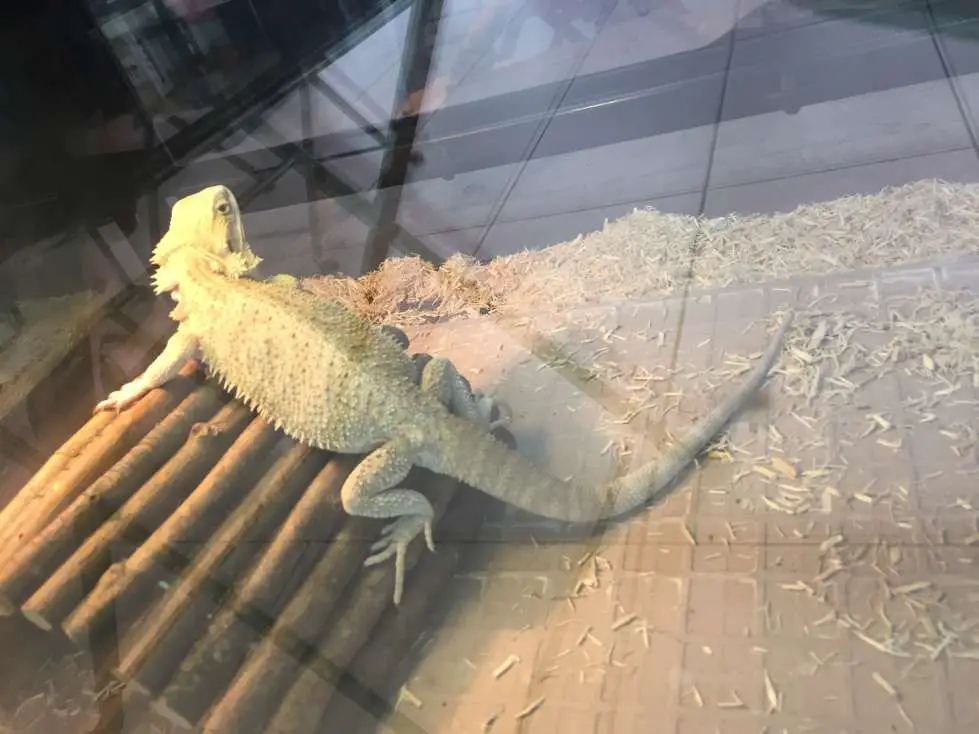
Hypomelanistics or Hypos are lighter in appearance than the average dark color from many beardies; they look a bit of pastel in coloration. Aside from their light-colored body, hypo bearded dragons have clear nails and eyes.
Here are some kinds of melanistic Morphs.
- Blood Hypo Orange.
- Yellow Hypo.
- Hypo Red Crawley.
- Ret Het Hypomelanistic.
- Hypo Yellow.
- Hypo Snow.
- Hypomelanistic.
- English Belgium Hypo.
- Hypo Het Translucent.
- Red Hypomelanistic.
Silkback Morph
Silkback bearded dragons completely lack the spikes and scales on their body. They have smooth skin and feel soft to touch.
They are more delicate to manage and care than other bearded dragons because their soft skin needs extra care when it comes to UV lighting and shedding. Despite all that, Silkback beardies tend to be fascinating and adorable.
New to bearded dragon? Check out the bearded dragon care sheet now! We had listed out all the things you need to know about bearded dragons as pets. Check it now!
German Giant Bearded Dragon

As the name suggests, German giant beardies are oversized, they can grow up to 30 inches, and mature one weigh 1000g. These are unusual beardies, and if you own one, make sure they have a larger enclosure to give out sufficient space and where they can thrive well.
Some of the varieties of German giant bearded dragons are as follows.
- Greenie X Orange German Giant.
- Hypo Red Orange German Giant Bearded Dragon.
Dunner Bearded Dragon
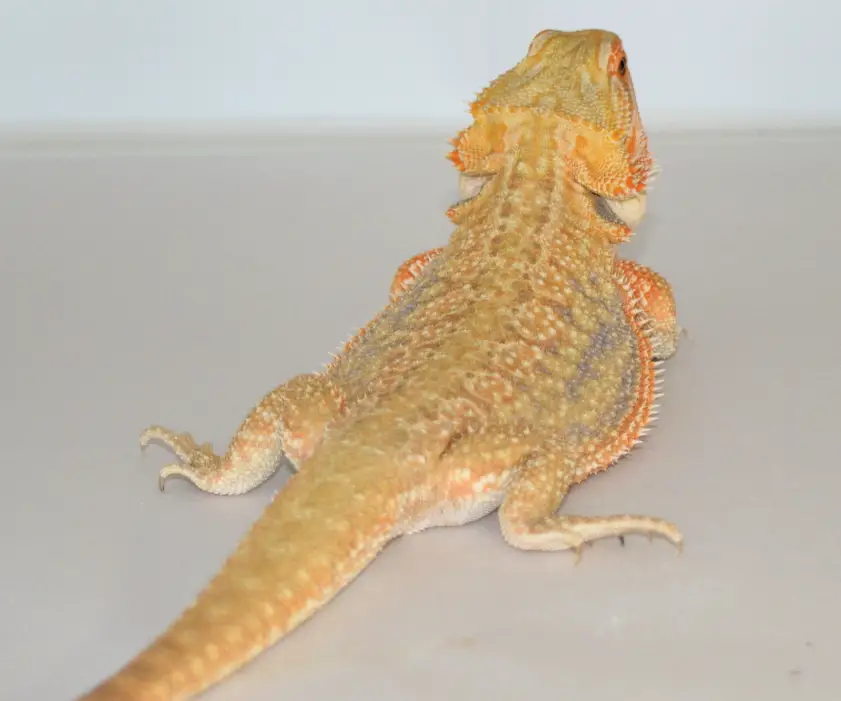
Dunner bearded dragons were first bred by Kevin Dunn, hence their name. They have unique clear markings that greatly distinguishes them from other bearded dragon morphs.
Unlike the typically organized markings from specific locations in the majority of the beardies, Dunners have random patterns spreading in the entire body. Therefore, they seem to have spots rather than spots.
The Dunners beard spikes face outward to the sides, which is contrary to other dragons who have their head spikes pointing downwards.
Also, their scales on the belly face in different directions, making them appear disorganized. The scales and spikes are more raised and heavy-textured from the other parts of its body due to the misdirection.
Here are different varieties of Dunner Morph.
- Hypo Translucent Dunner.
- Yellow and Orange Hypo Citrus Dunner.
- Hypomelanistic Dunner.
- Hypo Translucent Leatherback Dunner.
Paradox Morph
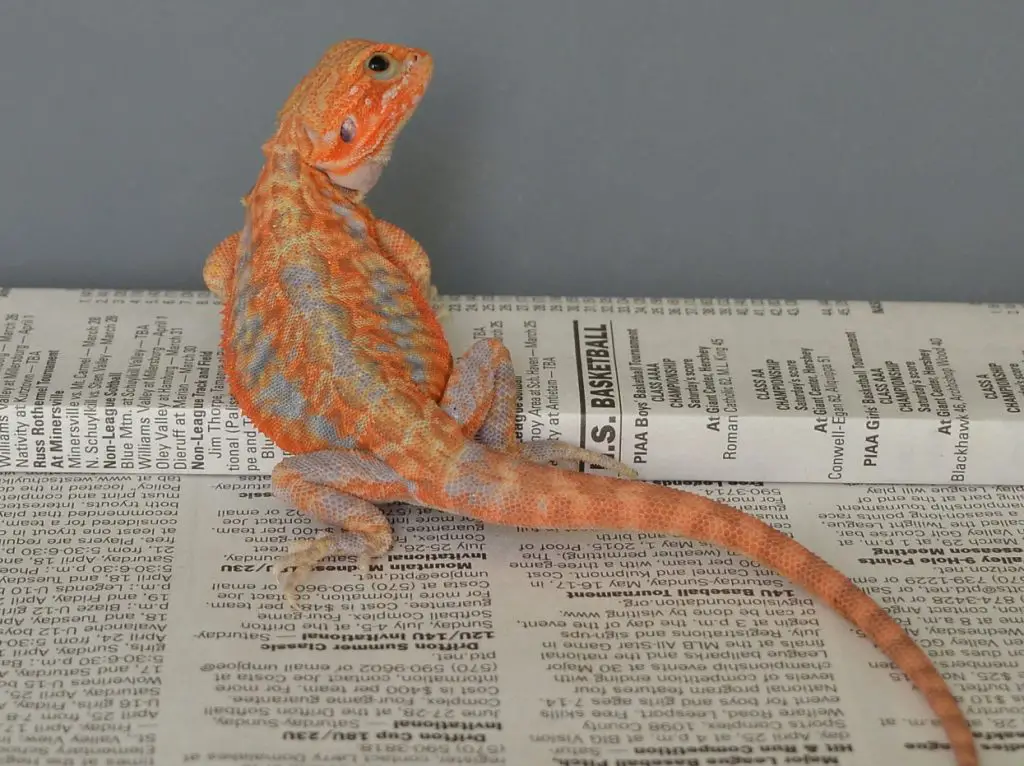
Paradox morph has the most beautiful and attractive bearded dragons. The beardies express evident random blotches of colors. Most of the patches are either blue or purple that are randomly placed.
Paradox morph came to be as a result of crossbreeding from several different morphs. The hatchlings have typical features of a normal dragon, but as they grow, the color shifts. The colors can shift several times before obtaining their final pattern.
Zero Morph
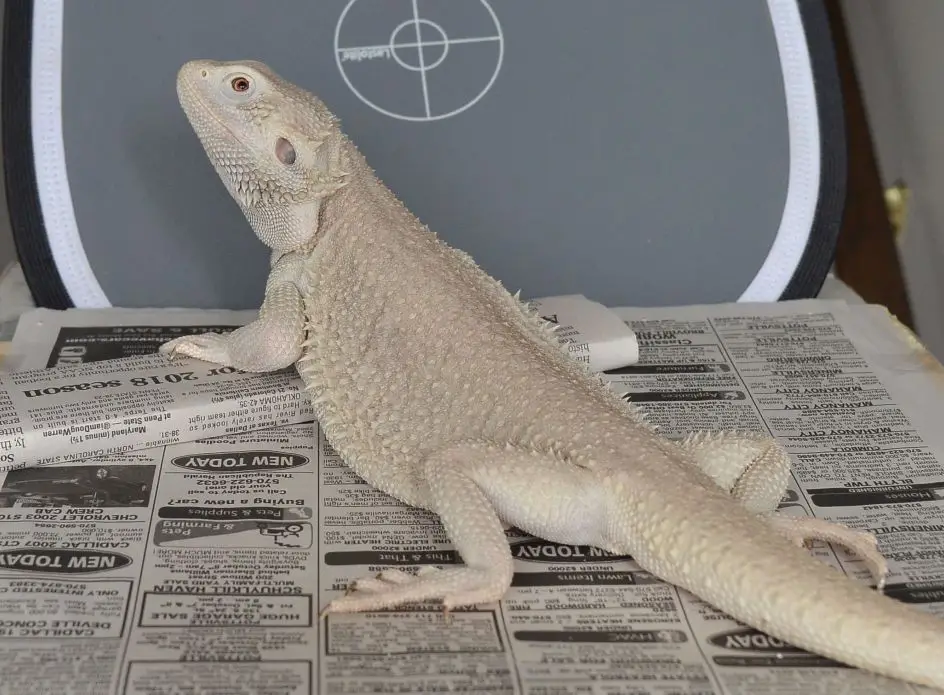
Zero morphs are extremely uncommon, and have a recessive genetic mutation and are patternless. Zero dragons have stunning silver-white color and are becoming popular in the breeding community.
Zero bearded dragons can also come in darker shades of gray or silver.
Wero Morph
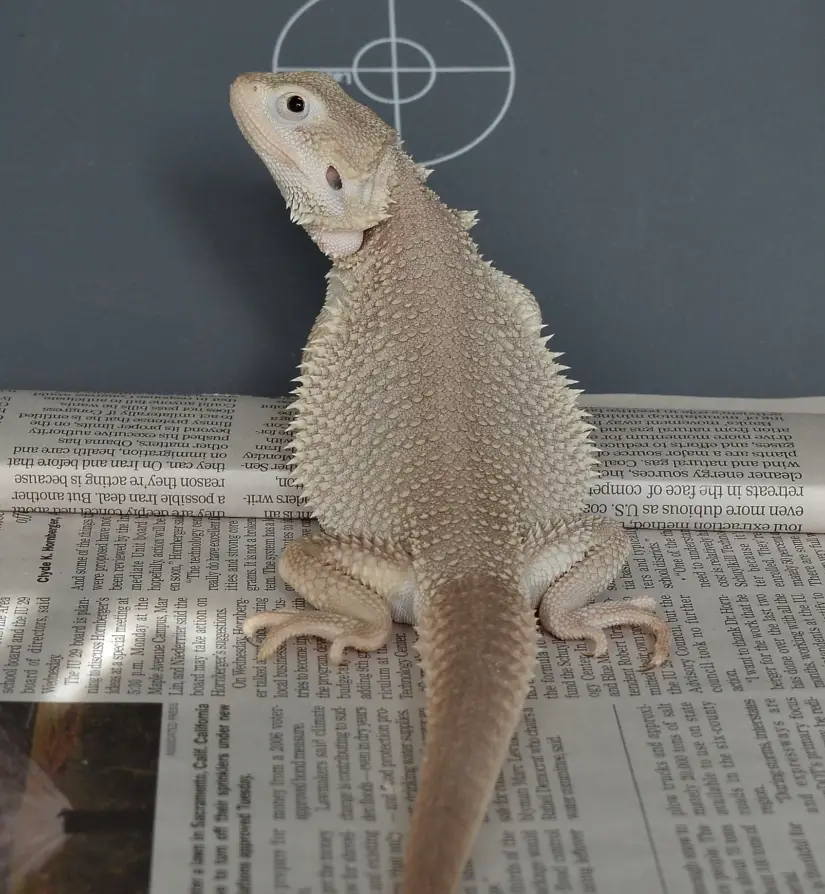
Wero morph is a crossbreed from Zero, and Witblits morphs. It closely resembles a Zero morph but portrays some dark spots near the tail and back. They are homozygous for zero and Witblits.
Witblits Morphs
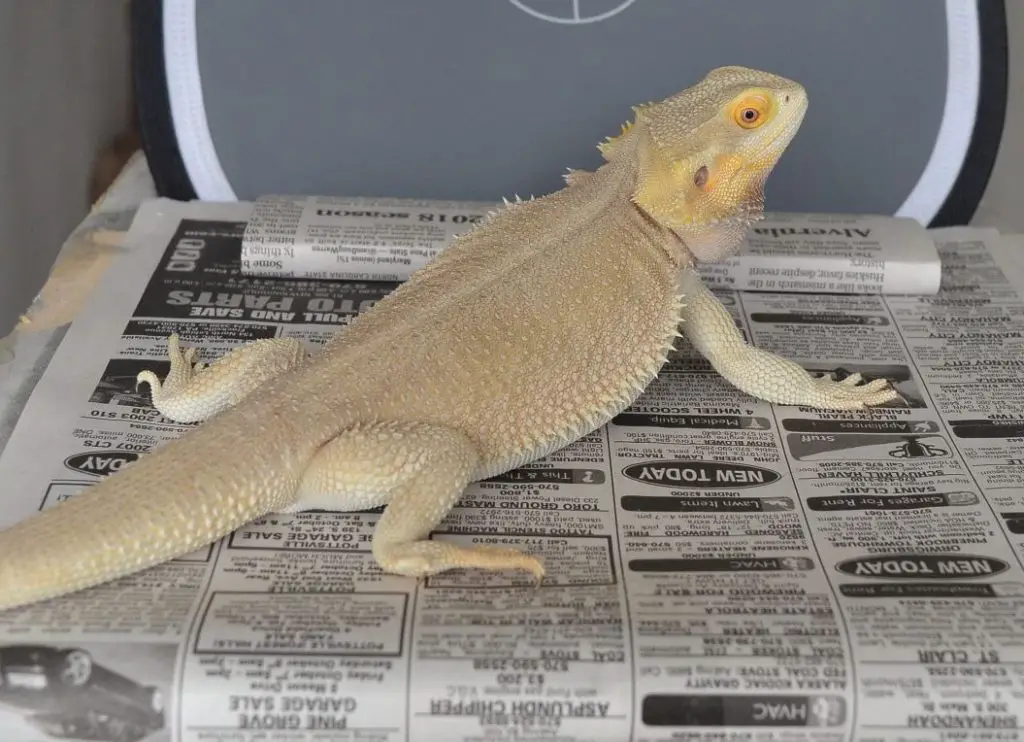
Witblits dragons are new in the breeding community and are challenging to find; hence, they tend to be costly. They were discovered by a breeder from South Africa. Witblits show a variety of muted colors like light orange and sandy brown and are patternless.
The meaning of witblits is ‘white lighting’. These dragons were named witblits because their color initially closely resembled the white dragons of today. The traits of Witblits have improved with time to what we currently see today, as the above image illustrates.
Bearded Dragon Patterns
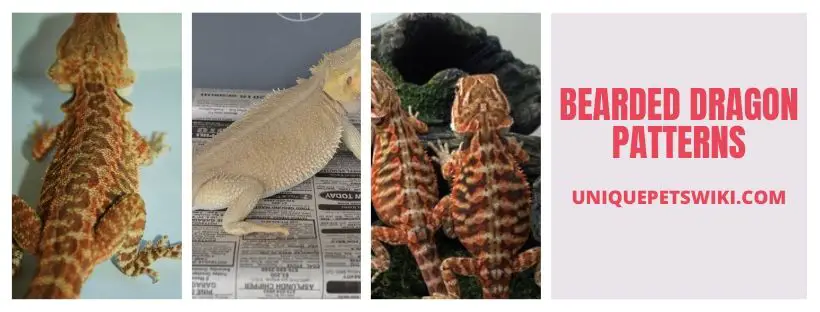
Bearded dragon patterns refer to how the beardie looks in terms of its skin design. The patterns are not purposefully bred for like the morphs and colors, but the breeders may be interested in some specific patterns.
The popular pattern is the tiger pattern. You are likely to come across many funny pattern names such as freckles. However, they are uncommon among the beardie owners and probably the breeding community. Such names come from the breeder to make the pattern sound more interesting.
What to call a pattern or color in bearded dragons is a matter of opinion, but the case is different with morph. Let’s have a look at various bearded dragon patterns that are common.
Zero Pattern
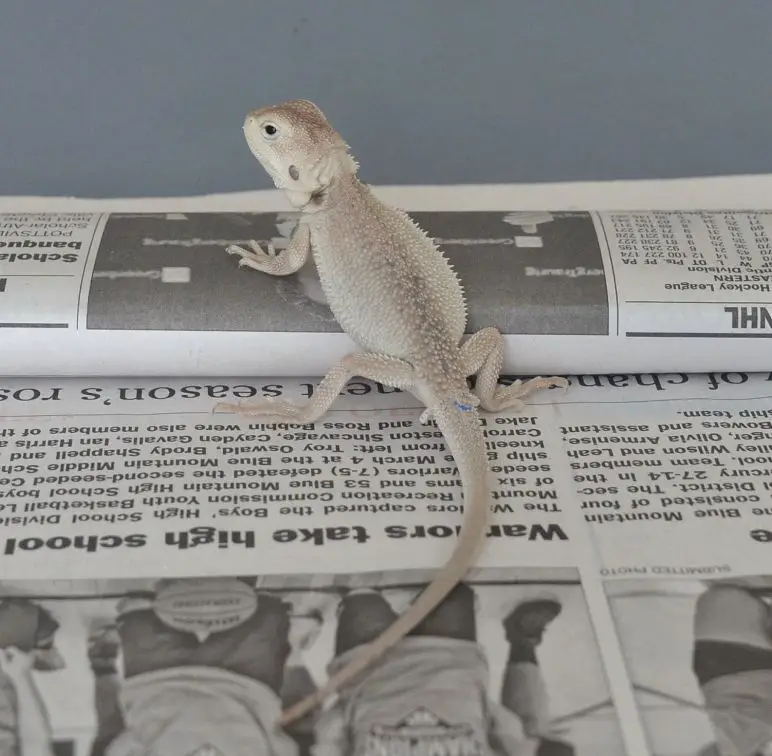
Zero pattern means that the bearded dragon does not display any pattern; they are pattern-less. Witblits and zero bearded dragon morphs are in this category.
The zero beardies are colorless and completely lack pattern. Witblits lack markings and show a variety of muted colors.
Tiger Pattern
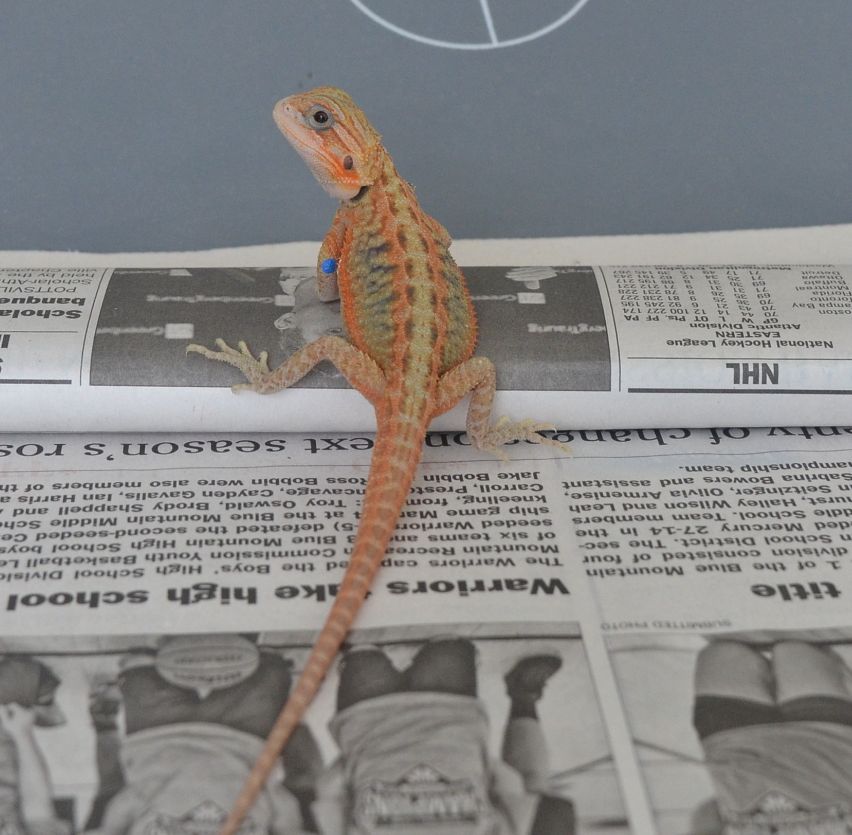
The Tiger pattern looks like the stripes on the back of a tiger. The beardies in this category show dark horizontal lines across the back. The value of the beardie and its price depends on these lines. When the lines are deeper and strong, then the beardie tends to be more expensive.
Other Patterns
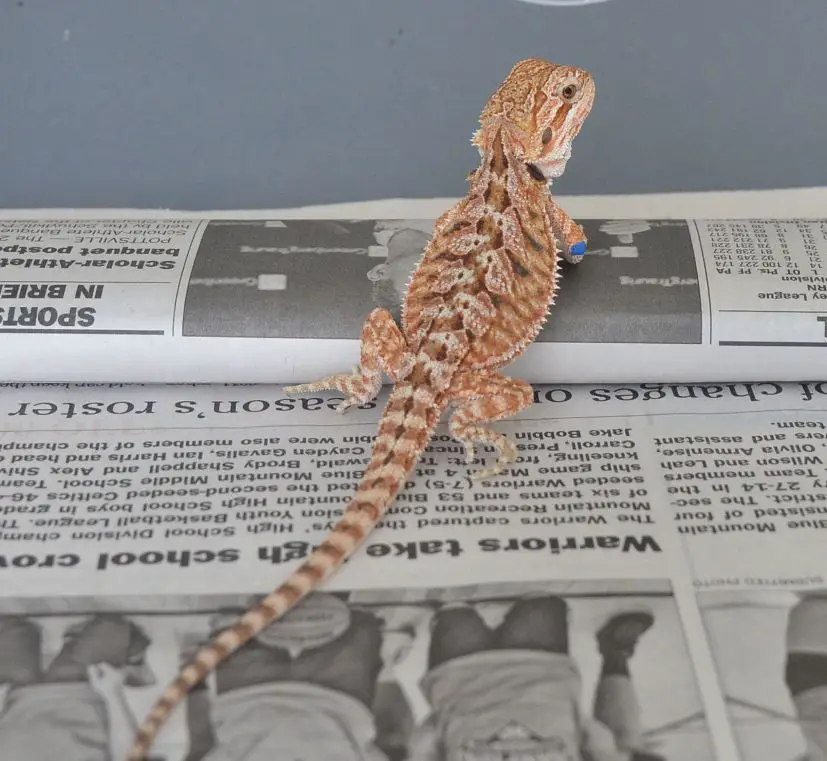
There are no other official names for dragons’ patterns, except for the trademark pattern of Dunner bearded dragons. There are different types, such as unbroken line patterns or the long S pattern, as portrayed in the above image, but they are not set names. It is what the breeders use to describe different patterns.
New to bearded dragon? Check out the bearded dragon care sheet now! We had listed out all the things you need to know about bearded dragons as pets. Check it now!
Bearded Dragon Colors
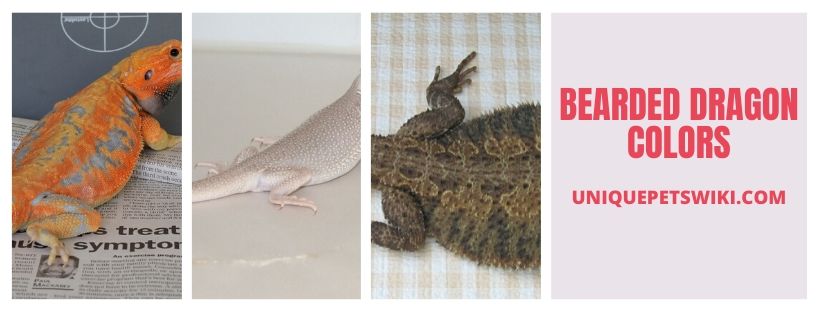
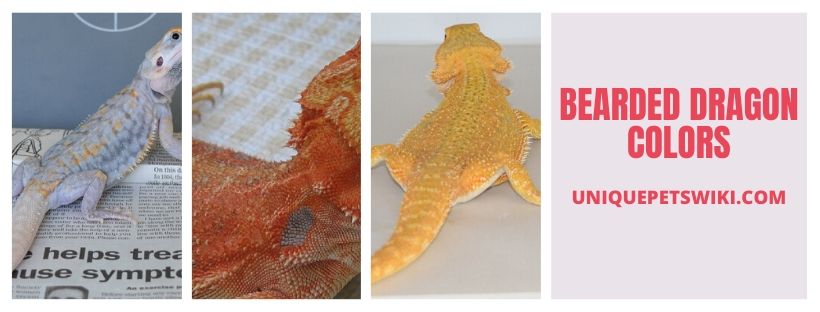
Bearded dragons come with any color today as a result of selective breeding. This is contrary to the past, where the beardie’s color mainly depended on its habitat.
When it comes to color, different breeders tend to refer to colored beardies with differing names. For instance, what a certain breeder refers to be citrus, you will find another breeder calling it lemon or yellow.
There may be so many different words to describe the beardie’s colors, but the most important things are that you can see the common colors- red, orange, white, etc. The dragons with only one color are said to be saturated and tend to be costly in the breeding market.
Below are the most common colors among the bearded dragons.
Yellow Bearded Dragons
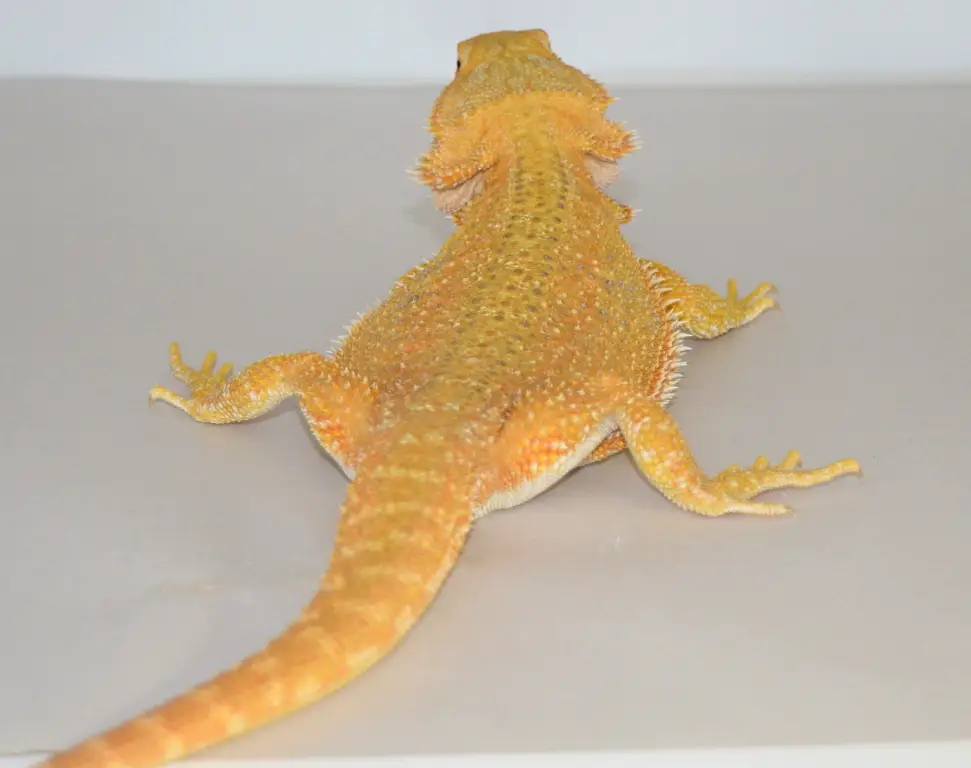
Yellow bearded dragons are obtained after crossing two beardies who have yellow as the dominant colors. The crossbred beardie from the two parents is more yellow in appearance.
Here are the examples of beardies that are yellow in appearance.
- Yellow Bearded Dragons.
- Citrus Dragons.
- Gold Bearded Dragons.
- Sandfire Gold Bearded Dragon.
Let’s see dragons with a mix of yellow and other colors.
- Citrus Tiger Beardie.
- Sunburst Dragon.
- Sandfire Red Bearded Dragon.
- Orange Bearded Dragon.
- Tangerine Dragon.
Purple/ Blue Bearded Dragon

Purple/blue lizards are results of breeding two translucent beardies together. The offsprings will have a blue/purple coloration only when they are young. As they grow, they lose these colors and become translucent.
A typical translucent dragon may be bluish on the belly, but these baby lizards express the color throughout the body.
Purple/blue bearded dragon.
Red Bearded Dragons
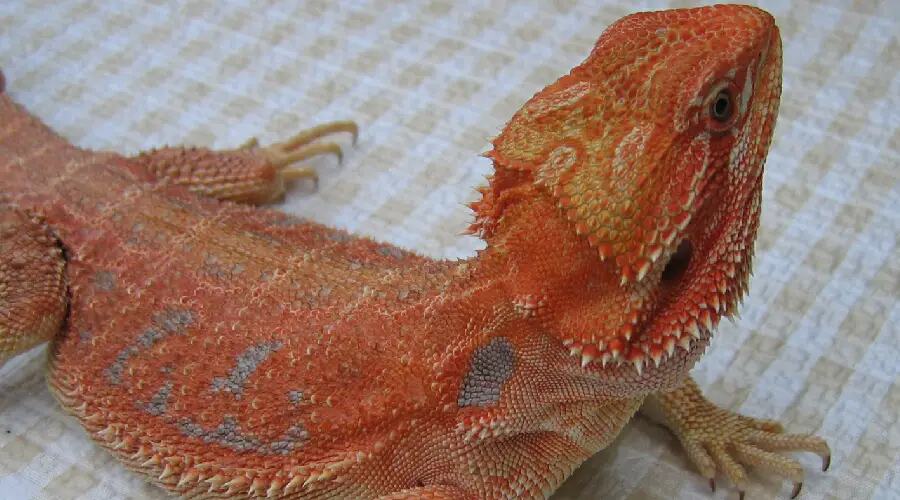
Red bearded dragons are the most kept pets by dragon owners. They are products of two different bearded dragons that have red coloring in large amounts. The red color on beardies tends to vary; some will have a deeper red skin while others a lighter red coloring.
The deep red coloring is a sign that the individual is a product of multiple generations of breeding. The beardies with lighter red coloration are among the first generation of the crossbred parents.
To obtain different colored red dragons, breeders choose to breed red beardies with dragons from different colors.
These are bearded dragons with red appearance.
- Red Bearded Dragon.
- Ruby Red Bearded Dragon.
- Blood-Red Bearded Dragon.
Here are examples of beardies with a mix of red and different colors.
- Citrus Tiger Beardie.
- Sunburst Dragon.
- Sandfire Red Bearded Dragon.
- Orange Bearded Dragon.
- Tangerine Dragon.
White/ Silver Bearded Dragons
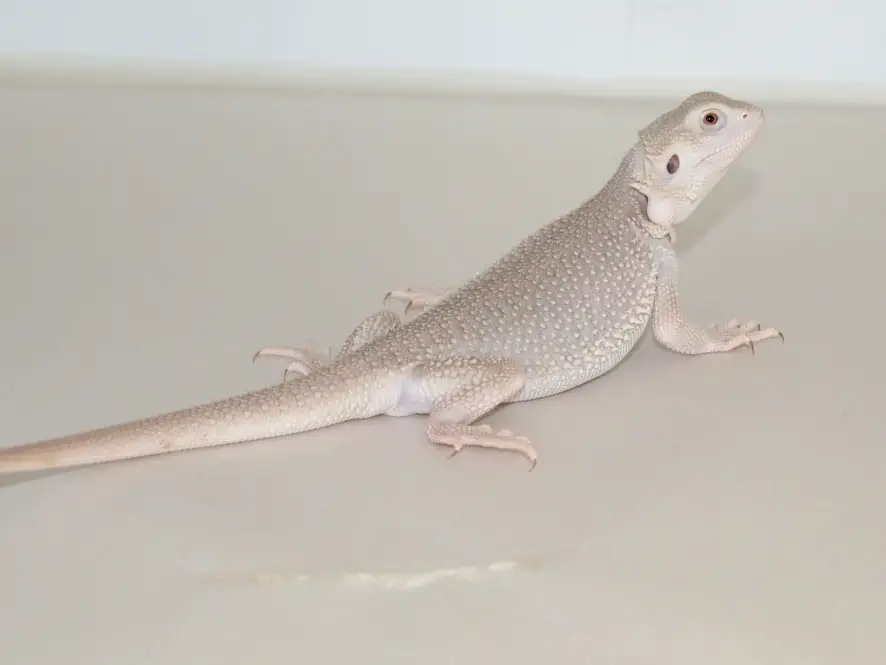
These beardies are as a result of crossbreeding between pale or white dragons. The offsprings possess a lighter color. These dragons have black eyes and mostly with yellow lining around the eyes.
The wiblits and zero morphs carry white or silver as their standard color.
Brown/ Tan Bearded Dragon
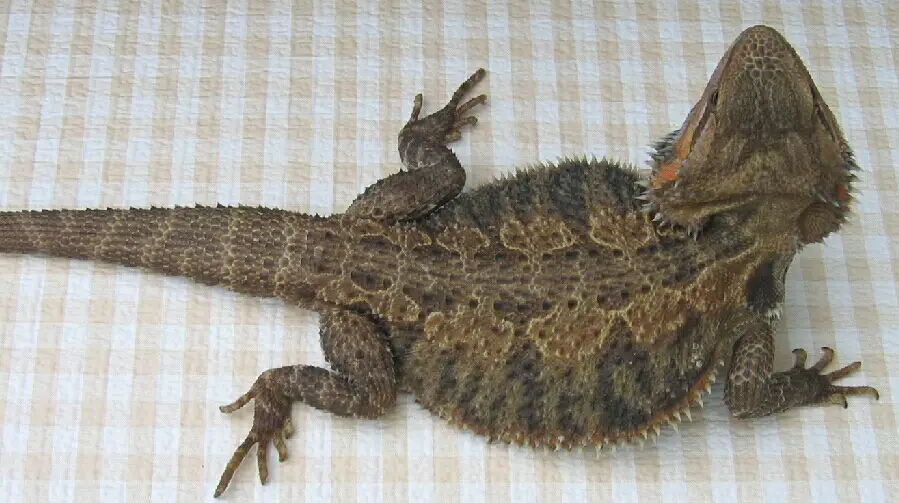
These sandy colored beardies are common, and they possess brown and light grey coloration and probably a hint of muted yellow or orange.
The majority of the bearded dragons are Brown/ Tan. Other standard colors apart from these two are the combinations of yellow, green, and red.
Orange Bearded Dragons
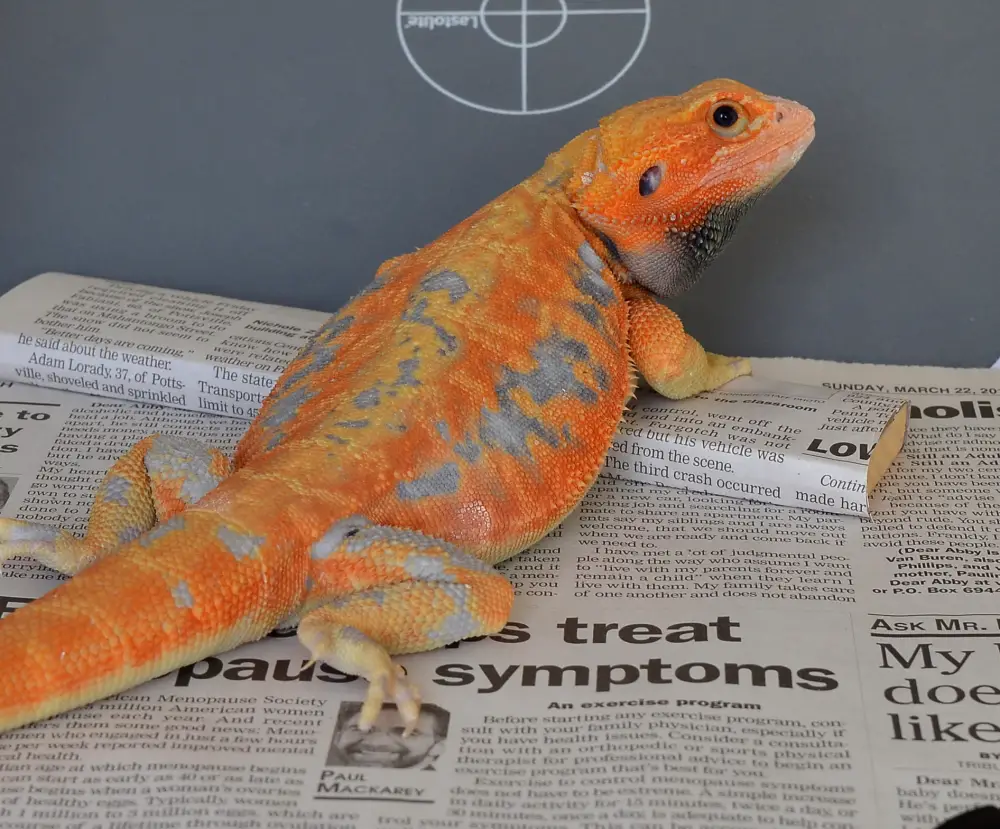
The true orange beardies are largely sought, and finding them seem to be difficult. True orange bearded dragons are noticeable even when in dull environments.
Bearded Dragon Color Changing
Do bearded dragons change color? Definitely yes, bearded dragons change their body color for a purpose. They do so to regulate body temperature. Also, changing the body color indicates that the lizard is communicating with other dragons.
A darker backside tends to keep the dragons warmer in cold conditions. Getting darker helps them to keep the body temperature up quickly.
Can we consider that a new morph when the color changed? it is not really a new morph because the color changes temporarily.
What Are Cheap Bearded Dragon Morphs?
The best way to save yourself from spending too much than necessary purchasing a bearded dragon morph is to have the right information at hand.
Educate yourself about the morphs as much as possible is a good choice. Not all the breeders or the sellers are to be trusted; they can still fetch a lot of money from you for just a simple beardie.
The typical morphs that are easy to find and are widely kept by dragon owners will not cost much. For example, Classic/standard bearded dragons are the least expensive beardies to buy.
Bearded dragon morphs that have only one color are more expensive than the beardies displaying a mix of colors.
Bearded Dragon Morphs FAQs
What is the rarest bearded dragon?
Silkback bearded dragons are turning out to be the rarest. Silkback is among the unique bearded dragon morphs. It absolutely lacks the classic spikes that are present in the majority of the bearded dragons.
These lizards do not have scales and are named silkies because of their soft skin texture.
How do I know what morph my bearded dragon is?
To distinguish and identify the morph of your bearded dragon, first, you need to have good knowledge about morph.
Then from there, you will be able to identify your dragon’s morph by considering several features.
Look for; nails, eyes, spikes, scales, etc.
What morph is a fancy bearded dragon?
To give a simple answer, fancy is not a morph. It is a term that breeders or sellers normally use when they are not really sure about a certain morph.
Using the fancy word helps them to differentiate the morph from the standard bearded dragons.
What are the different types of bearded dragons?
There are various types of bearded dragons that you can find in the pet show or shops. They come in different coloration, appearance, sizes, and somewhat in behaviors.
The three major types of bearded dragons are; inland bearded dragons, coastal bearded dragons, and Rankin dragons.
How many different colors of bearded dragons are there?
There are six common colors of bearded dragons. They are yellow, red, purple/blue, brow/tan, white/silver, and orange.
Wrapping Up
Here you have it. Indeed, the number of bearded dragon morphs available is not just a few. When it comes to bearded dragon appearance, you can see an infinite number of possibilities.
However, in general, when it comes to narrowing down the playing field(morphs), you can expect the 11 morphs, as mentioned above, to represent the majority. If you are somewhat familiar with these 11, you should be somewhat decent at identifying morphs.
Remember to consider the overall colors and patterns above all else when trying to distinguish one morph from another bearded dragon.
